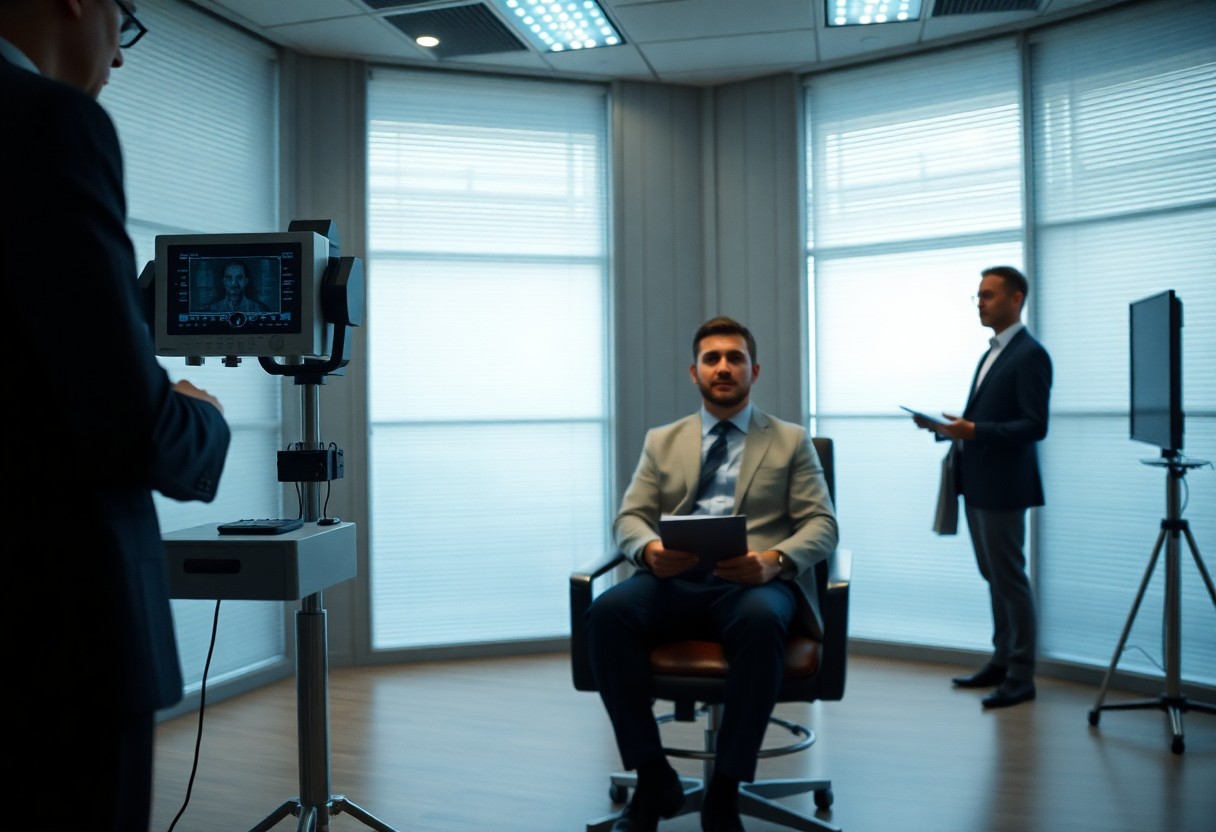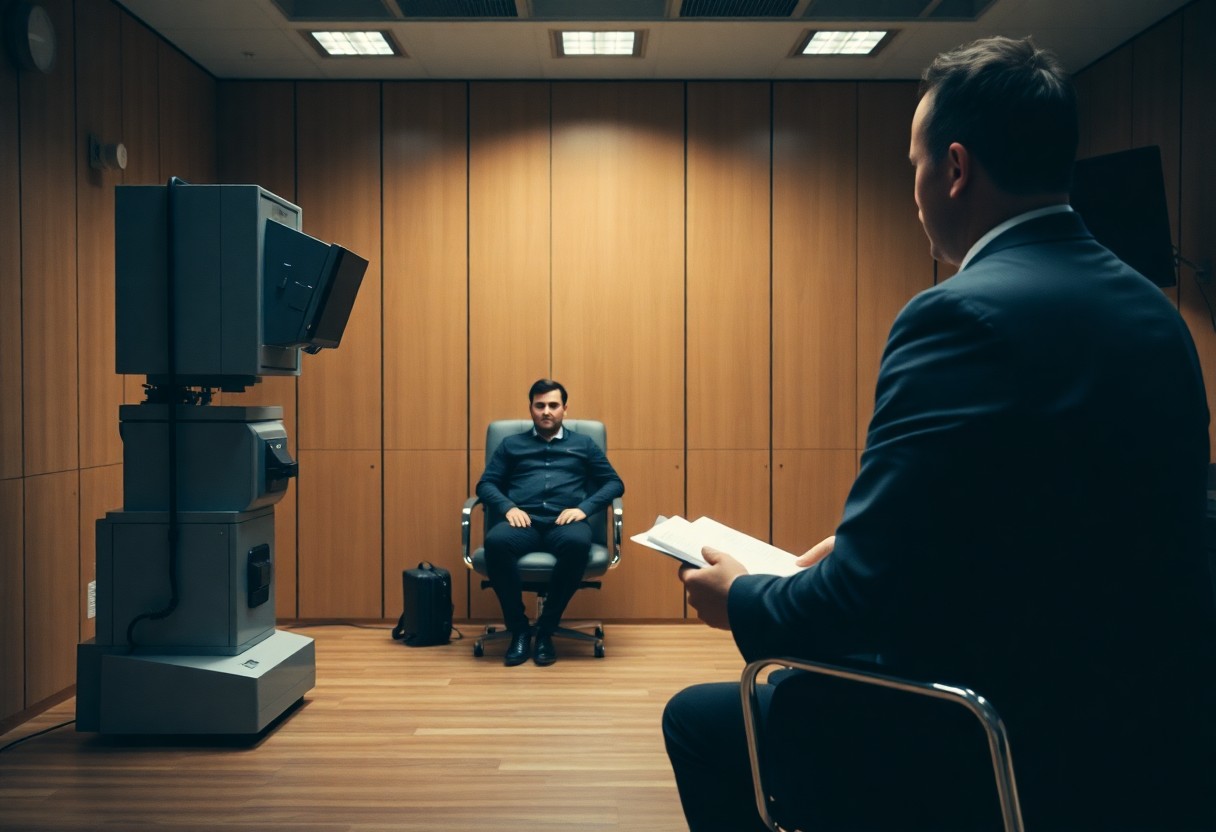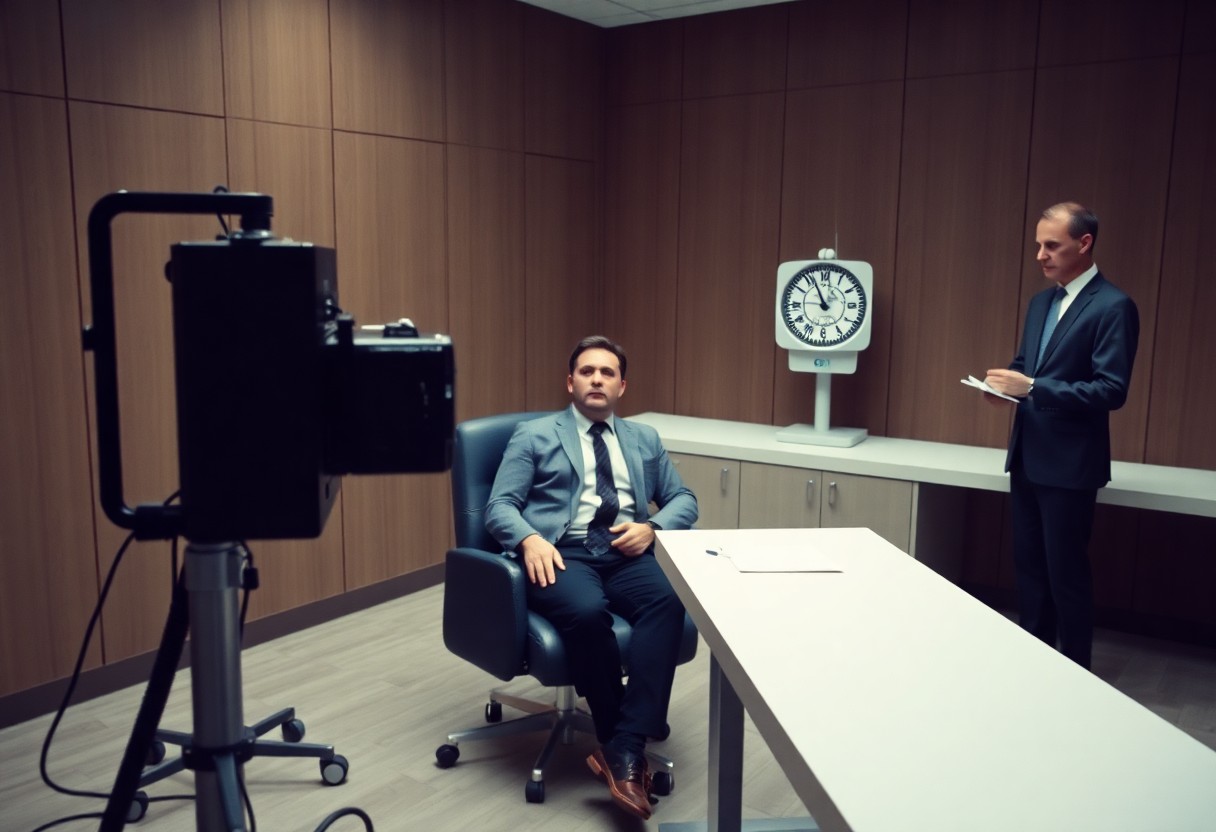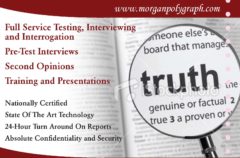
It’s vital for you to understand the intricacies of lie detector techniques to become proficient in detecting deception. By honing your skills, you can enhance your ability to interpret physiological responses and develop a keen sense of behavioral cues. This guide will take you through five key steps, providing you with not only the foundational knowledge but also practical tips to improve your accuracy and confidence in this fascinating field. Embrace the challenge, and you will sharpen your intuition and judgment, empowering you in both personal and professional interactions.

Key Takeaways:
- Understand the Fundamentals: A solid grasp of the basics of lie detection, including psychological and physiological indicators, is vital for effective analysis.
- Practice Active Observation: Developing keen observational skills will enhance your ability to detect inconsistencies and behavioral cues in individuals.
- Use Technology Wisely: Familiarity with modern polygraphs and detection equipment can significantly improve accuracy and reliability in assessments.
Understanding the Science Behind Lie Detection
The science behind lie detection combines psychology and physiology to reveal the truth. Understanding these concepts allows you to grasp how emotions and physical reactions correlate with deceit. Various methods, including polygraph testing, analyze changes in heart rate, respiration, and skin conductivity. By learning how to observe these signs effectively, you can enhance your ability to determine if someone is being dishonest.
The Psychological Basis of Deception
By exploring the psychological factors behind deception, you can gain insight into why individuals lie. Various motivations such as fear, guilt, or self-preservation drive people to fabricate stories. Understanding these motivations enables you to evaluate a person’s rationale for dishonesty and better assess the likelihood of deceit in their statements.
Physiological Responses and Their Interpretation
Psychological factors are often reflected in your body’s responses during moments of stress, such as when lying. These physiological reactions – including increased heart rate, perspiration, and rapid breathing – serve as indicators of potential deception. You must learn to interpret these signs correctly, as they can reveal varying levels of emotional distress associated with lying.
Understanding physiological responses is necessary for mastering lie detection techniques. Your ability to accurately read these signs can significantly impact your assessments of honesty. For instance, a rapid heartbeat might indicate anxiety linked to deceit, whereas consistent eye contact could signal confidence and truthfulness. By correlating these physiological indicators with the context of the conversation, you enhance your detection skills. Taking note of these details, you can distinguish between mundane signs of nervousness and those that suggest dishonesty.
Essential Tools and Equipment for Lie Detection
If you are serious about mastering lie detector techniques, equipping yourself with the right tools is important. Effective lie detection involves not just skill, but also understanding the technology. For a deeper investigate the workings of lie detectors, check out Mastering the Polygraph: Insider Tips from Local Examiners. Investing in proper equipment will enhance your accuracy and reliability in readings.
Types of Polygraph Machines
One effective way to elevate your skills is by familiarizing yourself with the different types of polygraph machines. These devices can vary widely, and understanding their functions is key to accurate readings. Below is a concise overview:
| Machine Type | Functionality |
| Analog Polygraphs | Traditional, less digital interference |
| Digital Polygraphs | More accurate data collection |
| Computerized Polygraphs | Employs advanced algorithms for analysis |
| Portable Polygraphs | For on-the-go assessments |
| Biofeedback Devices | Measures physiological responses |
Any device you choose must be reliable and suited for your specific needs in lie detection.
Alternative Methods and Technologies
By exploring alternative methods and technologies, you can expand your capabilities in lie detection. These methods may complement traditional polygraph testing with innovative tools, such as voice stress analysis and facial expression recognition software.
Considering the wide range of alternative technologies available can enhance your understanding of lie detection. For instance, voice stress analysis operates on the premise that stress levels alter speech patterns. Similarly, facial recognition software evaluates facial cues and micro-expressions, providing insights that polygraphs may overlook. Both approaches can offer a positive alternative to conventional methods, yet it’s vital to stay informed about their limitations and the potential for misinterpretation of data. Ultimately, integrating these technologies with your polygraph skills can give you a comprehensive edge in your lie detection endeavors.
Preparing for a Lie Detector Test
Keep in mind that proper preparation is vital for effective lie detector testing. Familiarize yourself with the equipment, understand the procedures, and create a comfortable environment for the subject. This ensures accurate measurements and a smoother process. You should also establish a rapport to put the subject at ease, allowing for a more reliable assessment of their responses.
Establishing a Baseline
Above all, establishing a baseline is vital for successful lie detection. Gather initial physiological readings from the subject when they are relaxed and telling the truth. This data will serve as a reference point to compare their responses during the questioning phase, allowing you to identify deviations that may indicate deception.
Communicating Effectively with Subjects
Test your communication skills by engaging subjects in a clear and respectful manner throughout the testing process. Establishing a connection and making them feel safe leads to more honest responses.
The way you conduct discussions can significantly influence the outcome of the test. Use active listening techniques and employ a calm demeanor to encourage openness. Asking open-ended questions will provide better insights into their thoughts and feelings. Additionally, maintaining positive body language and demonstrating empathy can create a comfortable atmosphere that fosters trust, ultimately leading to more truthful answers. Stay aware of subtle cues that might indicate discomfort or uncertainty, allowing you to adapt your approach effectively.

Administering the Polygraph Test
Unlike other interrogation methods, administering a polygraph test requires a structured approach to ensure accurate results. You must create a neutral environment and establish rapport with the subject. Position the sensors correctly and ensure the individual is comfortable before beginning the process. Your ability to maintain a relaxed atmosphere can significantly impact the test’s outcomes, making it imperative for effective administration.
Step-by-Step Testing Procedure
To ensure a smooth testing process, follow the structured steps outlined below:
| 1. Pre-Test Interview | Gather background information and establish rapport. |
| 2. Calibration | Ensure the polygraph is set up and calibrated correctly. |
| 3. Sensor Placement | Attach sensors to measure physiological responses accurately. |
| 4. Question Formulation | Create clear and concise questions for the test. |
| 5. Conducting the Test | Administer the test while monitoring the physiological data. |
| 6. Post-Test Analysis | Review results and discuss findings with the subject. |
Common Pitfalls to Avoid
For effective lie detection, you must be aware of common pitfalls that can compromise your results.
Understanding the impact of bias can be vital for accurate assessments. You must remain objective and avoid leading questions that might influence the subject’s responses. Additionally, overanalyzing physiological responses can lead to false interpretations; it’s imperative to focus on patterns rather than isolated incidents. Lack of preparation and insufficient knowledge about how polygraphs operate can also distort your findings. To achieve reliable outcomes, ensure thorough training and practice, fostering your confidence and expertise in the administering process.
Analyzing Test Results
Once again, reviewing lie detector results requires a keen eye and understanding. These tests measure physiological responses to determine truthfulness, but interpreting the results accurately is vital. For in-depth knowledge about lie detector tests, including their phases and accuracy, check out this Lie Detector Test | Uses, Phases & Accuracy – Lesson. Your proficiency in analyzing the data can greatly influence your outcomes.
Interpreting Graphs and Readings
Below the surface of complex graphs, you will find the emotional landscape captured during questioning. Familiarize yourself with the three key readings: heart rate, blood pressure, and respiration patterns, as these metrics provide insight into the subject’s stress responses. Understanding how these variables correlate with truthfulness will enhance your skill in interpreting lie detector results.
Factors That Influence Accuracy
Any variations in the testing environment or subject conditions can impact results significantly. Factors that may affect the accuracy include:
- Subject’s emotional state
- Health conditions
- Medications
- Question phrasing
- Pre-test anxiety
This highlights the importance of a controlled environment to ensure valid results.
Considering how these elements play into the overall accuracy is imperative for reliable outcomes. The subject’s emotional state should be as stable as possible, as heightened emotions can distort readings. Additionally, health conditions can skew physiological responses, while question phrasing must be neutral to avoid bias. Finally, pre-test anxiety can lead to physiological changes unrelated to deception, thus affecting accuracy. This careful examination of these variances will lead to more trustworthy conclusions.
Ethical Considerations in Lie Detection
For anyone aspiring to master lie detector techniques, ethical considerations play a vital role. Understanding the implications of your findings is important, as using these methods irresponsibly can have serious consequences for individuals involved. How to Use the Directed Lie Screening Test (DLST) outlines best practices to ensure you handle sensitive situations with care and fairness.
Legal Implications and Guidelines
An understanding of the legal landscape surrounding lie detection is important for every practitioner. Each jurisdiction may enforce different laws regarding the use of lie detectors, making it crucial to comply with local regulations to avoid legal repercussions.
Balancing Accuracy and Integrity
Considerations surrounding the balance between accuracy and integrity are key in the practice of lie detection. While striving for accurate results, you must also prioritize ethical standards to foster trust and credibility in your assessments.
At the core of maintaining this balance is your ability to conduct tests with both precision and respect. As you gain experience, focus on creating an environment that allows honest responses while ensuring that any findings are interpreted within the context of their ethical implications. By being mindful of individual rights and the accuracy of your results, you pave the way for a more reliable and reputable practice.
Conclusion
So, by following these 5 key steps to mastering lie detector techniques, you can enhance your skills and intuition in detecting deception. Focus on understanding the physiological signals, honing your observation skills, and practicing effective questioning techniques. As you apply these methods, you’ll gain greater confidence in your abilities, allowing you to interpret verbal and non-verbal cues more accurately. Embrace the learning journey, and you’ll become not just proficient but truly effective in your ability to read people more accurately.
Q: What are the first steps to understanding lie detector techniques?
A: The first steps include familiarizing yourself with the basic principles of how lie detectors work. This involves gaining knowledge about the physiological responses being measured, such as heart rate, respiration, and skin conductivity. It’s crucial to study the theoretical frameworks behind deception detection and to learn about the different types of polygraph tests available. Practical training and observation of skilled practitioners can also enhance your understanding.
Q: How can one practice and improve their skills in lie detector techniques?
A: Improving your skills involves consistent practice and exposure to various scenarios. Engaging in role-playing exercises can simulate real-life situations, allowing you to apply your knowledge in detecting deception. Additionally, seeking feedback from experienced professionals can provide insights into areas that need improvement. Utilizing technology and software designed for training also offers simulated experiences that can help refine your skills.
Q: What resources are available for someone looking to master lie detector techniques?
A: Numerous resources can assist you in mastering lie detector techniques. Books written by experts in the field offer foundational knowledge and advanced strategies. Online courses and workshops provide structured learning experiences that often include assessments and certification options. Joining professional organizations or forums dedicated to polygraphy can also offer networking opportunities, mentorship, and access to the latest research and developments in the field.
